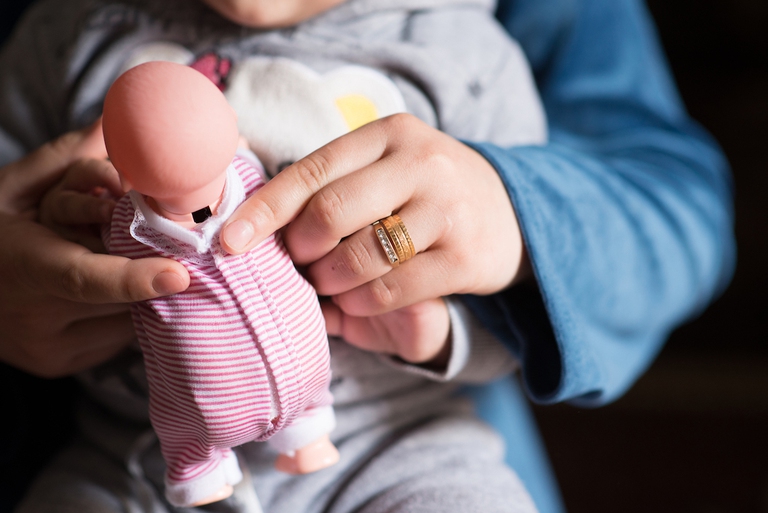
Costa Rica celebrated its first same-sex marriage when two women, Alexandra Quiros and Dunia Araya, celebrated their wedding: an “extraordinary moment”.
Fotografie e filmati dell’Unicef raccontano il terribile impatto della guerra in Siria sui 3,7 milioni di bambini nati dall’inizio del conflitto.
Saja is twelve years old. Her eyes are full of hope. She smiles, despite all the things she went through. She lives in Aleppo, Syria. When she goes to school, she has to walk on the ruins of her city. She lost a leg and two friends of hers in a bombing. “I’m happy to walk all the way to school. I love school”.
Her story is similar to that of millions of Syrian children, forced to live in a war-torn country. 3.7 million were born since the conflict began on 15 March 2011: their first wailings were lowered by the rolling din of bombs and warplanes.
A report titled No Place for Children published by UNICEF on 14 March outlines the impact war has on children’s life, shaped by violence, fear and displacement. In total, UNICEF estimates that some 8.4 million children are now affected by the conflict, i.e. over 80% of minors living in Syria.
“Five years into the war, millions of children have grown up too fast and way ahead of their time,” said Peter Salama, UNICEF’s Regional Director for the Middle East and North Africa. “As the war continues, children are fighting an adult war, they are continuing to drop out of school, and many are forced into labour, while girls are marrying early.”
The cease-fire started on 27 February – followed by peace talks between Bashar al-Assad’s regime and rebels – gives them hope. According to an AFP correspondent in Aleppo – the county’s second largest city –, many children attended to classes outside the basements they were hiding in to escape the bombs.
UNICEF reported 1,500 grave violations against children in 2015 alone. Over one third of minors who lost their lives were killed while at school. Therefore, attendance rate dropped dramatically, with over 2 million out-of-school children: among them, 700,000 fled to neighbouring countries.
According to UNICEF, a trend of particular concern is the increase in child recruitment by parties to the conflict: “More than half of the UNICEF-verified cases of children recruited in 2015 were under 15 years old – compared with less than 20 per cent in 2014”.
Children are now receiving military training and participating in combat. 14-year-old Huda was forced to shoot: “I was scared. The commander gave me a gun and said get ready for the battle.” She managed to run away, reaching a Jordan refugee camp. Like her, hundreds of thousands of Syrian children crossed the borders of their country. 15,000 of them were alone, without their parents.
Siamo anche su WhatsApp. Segui il canale ufficiale LifeGate per restare aggiornata, aggiornato sulle ultime notizie e sulle nostre attività.
![]()
Quest'opera è distribuita con Licenza Creative Commons Attribuzione - Non commerciale - Non opere derivate 4.0 Internazionale.
Costa Rica celebrated its first same-sex marriage when two women, Alexandra Quiros and Dunia Araya, celebrated their wedding: an “extraordinary moment”.
On top of a 2.4 million dollar compensation, the indigenous Ashaninka people will receive an official apology from the companies who deforested their lands in the 1980s.
From Italy to the United States, workers in the logistics and delivery sectors are protesting to demand better sanitary conditions to protect themselves from Covid-19.
The pandemic and its restrictions are affecting everyone, without exceptions. However factors like housing, income inequalities, gender, access to technology and working conditions are influencing how people experience the health crisis.
In the midst of India’s coronavirus lockdown, two dozen people lost their lives in a desperate bid to return home: migrant labourers forced to leave the cities where they worked once starvation began knocking at their doors.
Apple, Dell, Microsoft and Tesla are among the tech companies named in a lawsuit brought in the US by the families of children killed and maimed in cobalt mining activities in the Democratic Republic of Congo.
We, the people is Survival’s 2020 calendar, which features the winners of the photography contest showcasing images of the world’s indigenous peoples.
Un violador en tu camino – the rapist is you – is an anthem protesting the impunity of gender-based violence. It began in Chile and has become a global flash mob, bringing people to the streets and resonating all over the world.
Abiy Ahmed was awarded the Nobel Peace Prize for reaching peace with Eritrea. Yet, Indigenous groups in Ethiopia’s Lower Omo Valley have been abused by security forces, a fact that the prime minister must address, says the Oakland Institute.








